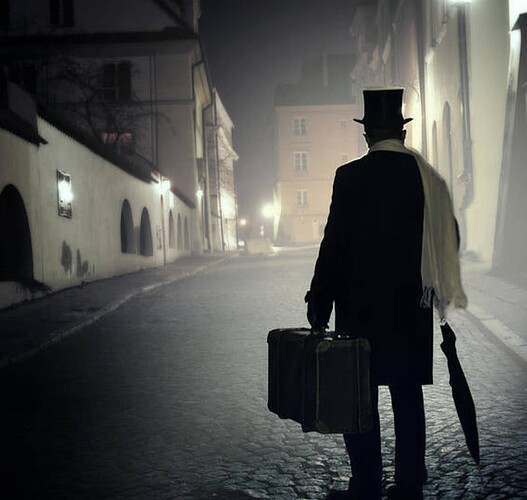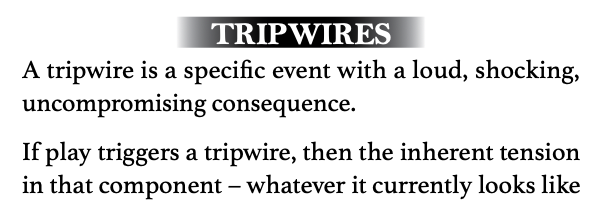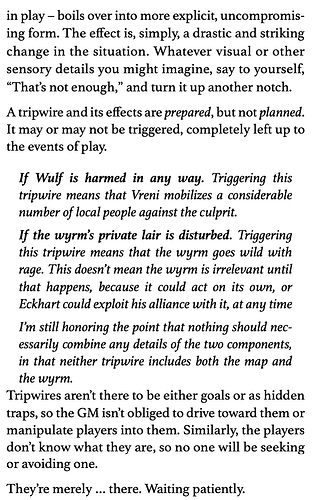Yeah, 2.5 years is a crazy time for a campaign, at least for me. We are playing it every week (well, with some pauses during summer breaks or Christmas break, of course), mostly sessions between 2 and 3 hours.
And - despite the obvious complications of such a long campaign (for example, I have absolutely no idea what happened in the first few sessions - I no longer have clear memories, and I lost my notes somewhere), we are having a really good time.
Since in other threads, it seems that some players have a different approach than mine, playing Blades (eg @Froggy has explained in this post (What's on your gaming table? - #22 by Froggy ), I want to share how we play Blades.
Game Structure
First of all: we almost never have a rigid structure between scores, free play, and downtime.
Yes, downtime has a very clear beginning (the score payout), but it’s never nearly clear when it will end, and it often mixes with free play (in a back-and-forth between free play scenes and downtime action), and very often, we play it in a flashback, when it seems interesting to us.
Furthermore, when solving a downtime action, we usually ask ourselves, “ok, are we interested in playing this scene? Are we interested in framing the action and telling the circumstances?”. If the answer is no, we roll the dice and apply the mechanical effects, without spending too much time on it.
The scores
As for the scores, apart from TWO scores (the first at the beginning of the campaign, and the second at the beginning of the second narrative arc, after a skip time of a few months from the conclusion of the previous one), I have never offered them to the players. Still, they arrived fluidly from the consequences and outcomes of the previous one. They have always been player initiatives, such as goals they wanted to achieve or the aftermath of the hit.
For example, after the 3rd session, I rolled on the “Reprisal” entanglements table. So I decided that one of the “friends” one of the players had on the sheet and that we had already brought into the scene, had been kidnapped. I told the players, “ok, you can pay 4 Coin or 4 Rep, because the gang is Tier 4… or you can try to face them”. They didn’t let themselves be intimidated, and the next score was to try to free their friend.
One thing that often happened is that the scores were then self-assigned, and the payout phase was null. The coins that entered the gang were due to free play deals, resold information, or from assets acquired during the heists.
Indeed, the patron of the gang was ignored almost immediately, and they never listened to the scores he suggested (later, in the campaign, he decided to take revenge for it, and still, even if he is in jail, he is a potential threat).
My preparation for the score, therefore, is usually very basic. I ask the players what they want to do, we play free play as long as we are interested, and when it is clear what the score will be, we think about the engagement roll. While they try to define the detail, I prepare my notes: a few ideas about the place and possible obstacles.
Then we make the engagement roll and play following the events of the fiction - very often, my preparation comes into play, because it’s unnecessary.
During one preparation, for example, I wrote down, “The paintings of Villa Scurlock are special” because I thought it would be interesting to find out why a Vampire has been collecting paintings for centuries. But the players never interacted with the paintings, and the heist scenes went in another direction. I still have no idea what’s special about those paintings! (On the other hand, I know very well that Scurlock has been collecting wines since before the Cataclysm, that he is the brother of the Emperor and the first Vampire in the world, and considers Setarra a daughter - all things that emerged in the game and discovered together with the rest of the group - let’s say I can settle).
The Action Roll and the Consequences
As for the action roll, at first, I had a little trouble explaining exactly how it works. We were coming from a 1.5-year campaign in Dungeon World, and the system was quite different. In Blades, we always need to clarify a couple of points very explicitly:
- what players want to achieve
- what’s stopping them from getting it
- what are the possible consequences of a fail
We discuss these things BEFORE the action roll, even before establishing Position and Effect.
Once these things have been established, the Action that the character is using has been chosen (unfortunately, in Italian, the concept of using actions as “real verbs” of the description of the undertaken task is less strong), as GM I set P/E. Usually, I go straight to Risky / Standard, unless really obvious circumstances change this choice.
Then I ask the player, “ok, do you have something to change your situation? Do you push yourself? Do you want a devil bargain?”. I listen to their answer, and I “valid” it (I mean that I help them understand if the excellent dagger really can improve their effect or not), and then we fire.
This phase lasts very little now because the players know their equipment, skills, and characters well. But in the beginning, of course, it took a moment to look at all the options.
I emphasize that it was never a bargaining - what we do is look “better” at the position in the fiction. Let’s use the character sheet as a magnifying glass to see the details better and frame the scene more accurately.
Then we roll the dice and look at the outcome.
Finally, the players decide whether to resist or not. From the first session, we agreed that resisting means limiting the consequences unless it is impossible to do so as a logic of the game world. In that case, we cancel them.
Therefore, if the risk taken was mortal, resisting the wound will become “only” a severe wound.
Another thing established early in the campaign was the number of consequences, dependent on position. In a desperate position, the consequences are many - usually three. And the players must decide whether to resist one, two, or three. In risky position 1 or 2, according to the situation in the fiction.
In the case of the controlled position, however, we follow the rules to the letter (the controlled position, in Blades, is a special position compared to the others).
Finally, early on, I had to help the group remember that resistance doesn’t undo failure! It decreases the consequences, but the action has failed, and the obstacle has not been overcome. This way, we never felt that the resistance roll would nullify a piece of play.
If the player’s goal was to jump from roof to roof, failure results in falling off the top. Resisting means that the character survives (breaking “only” one leg), but not that he miraculously manages to cling on and reach the other roof.
More or less, these are the macro principles and techniques that we use. I’m sure I’m forgetting some, so I’ll give myself the benefit of the doubt and the ability to add more details if they come to mind.
Of course, if you have any questions, just shoot them.


